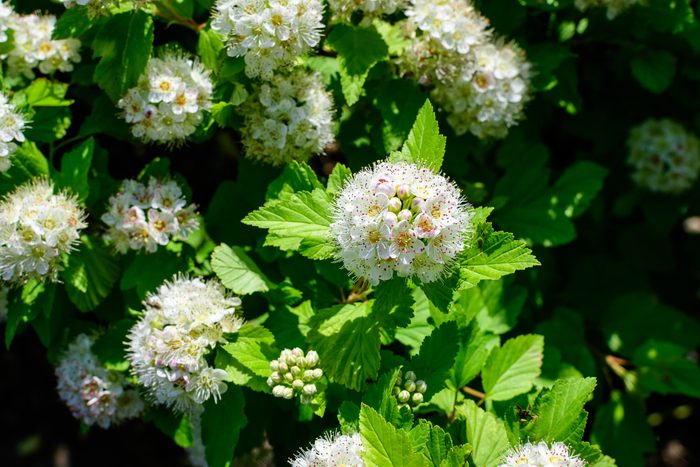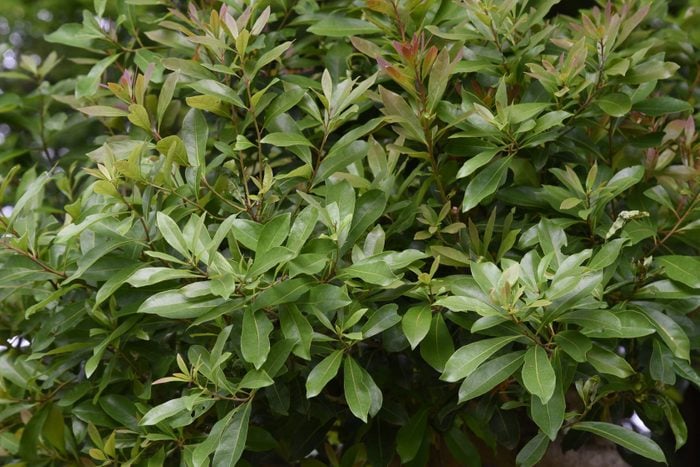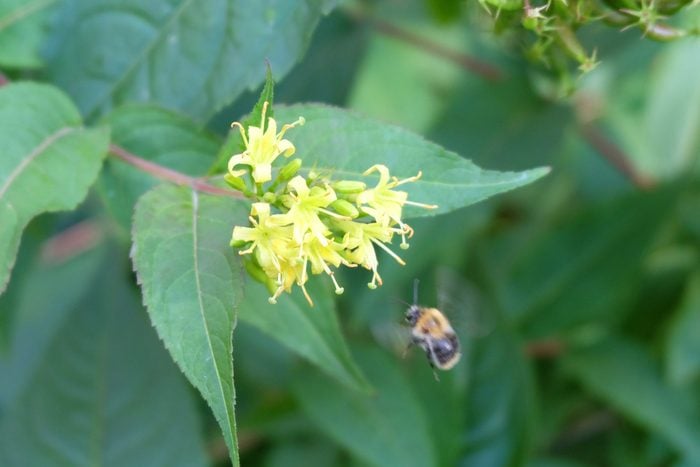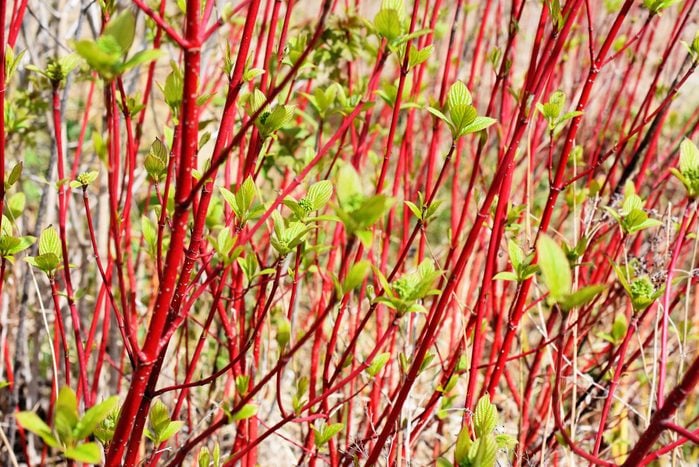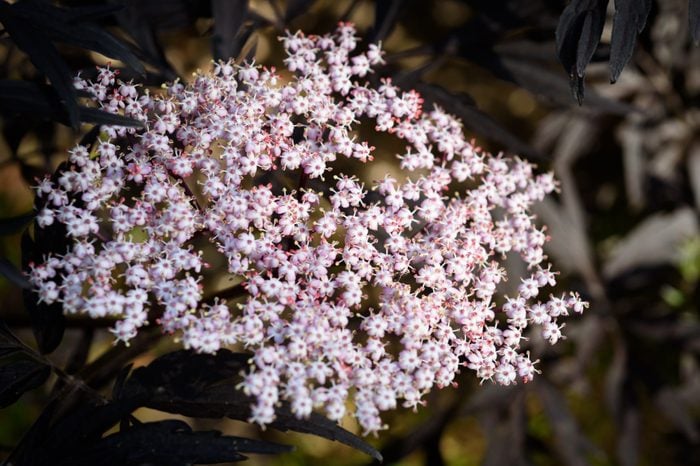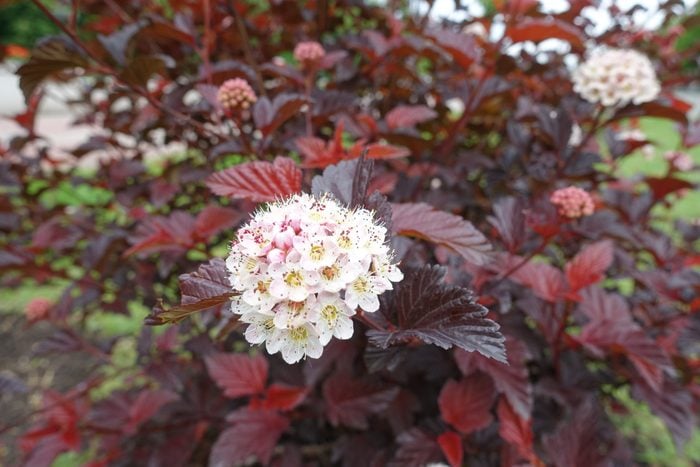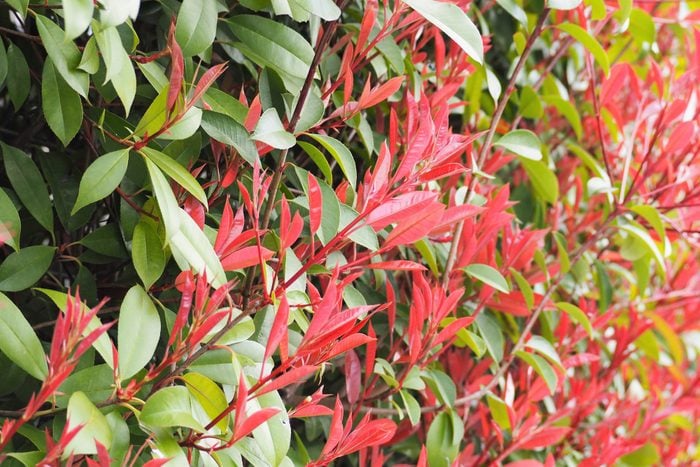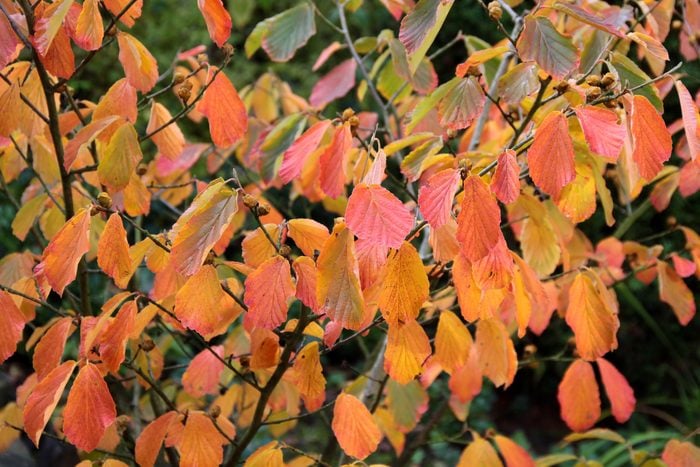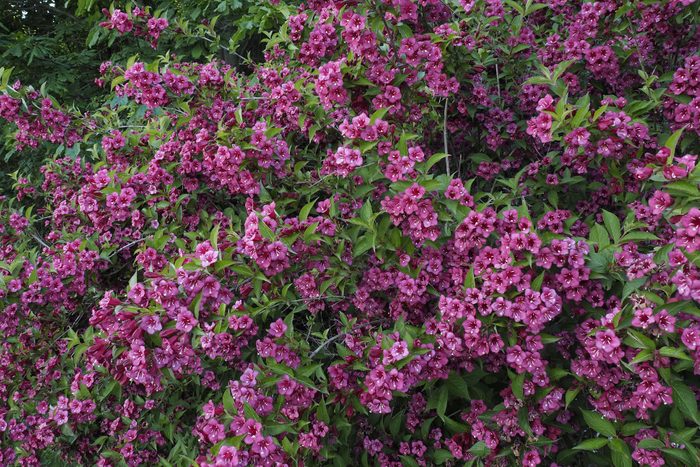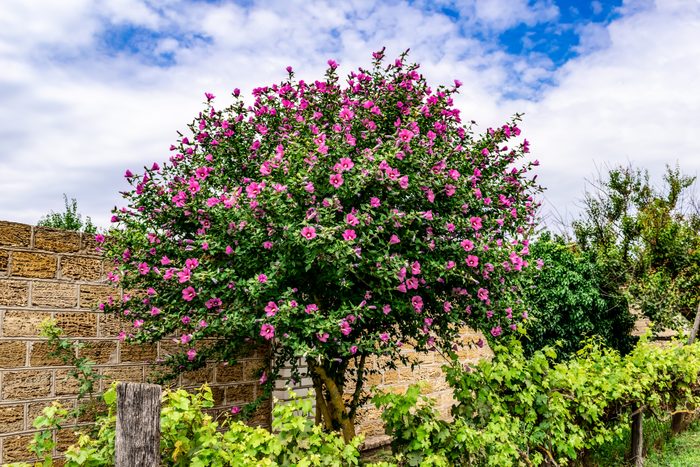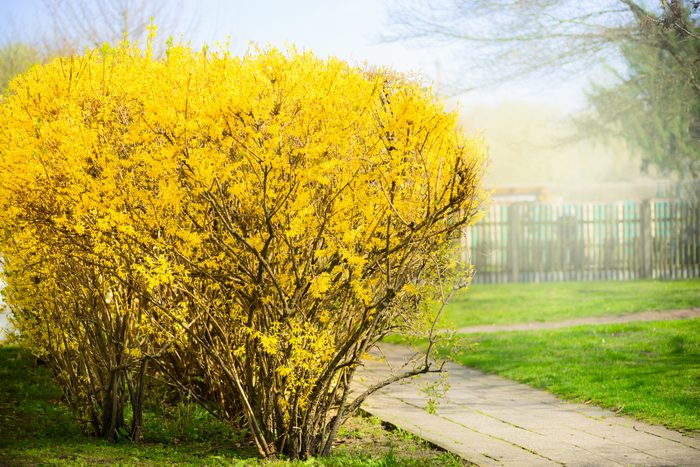Wax Myrtle
Also known as southern bayberry because of its glossy olive-green leaves, wax myrtle is a multi-trunk evergreen with whitish-gray bark and leaves that are fragrant when crushed. It reaches 15 to 20 feet tall and wide but can be easily sheared into a hedge.
When male and female plants grow close together, female wax myrtle develops pretty pale-blue berries that birds love. Plants grow up to five feet a year and make great screens. This heat-loving shrub grows best in moist, acidic soil but is adaptable once established. It grows in part to full sun in U.S. Department of Agriculture Plant Hardiness Zones 7 through 11.
Diervilla
Also known as bush honeysuckle, don’t confuse this with the similar-looking honeysuckle (Lonicera spp.), which is non-native and invasive. Adaptable Diervilla can be grown in full sun or full shade. It’s also drought tolerant and fast growing, with spidery yellow flower clusters in summer and bright orange-yellow foliage in fall.
The color is best when the plant receives plenty of sunlight. Diervilla typically tops out at three to four feet tall, becoming wider with age. It’s a master at overcoming difficult conditions, including sandy or gravelly soils. Hardy in USDA Zones 4 through 7.
Red-Twig Dogwood
Although it features airy-looking yellowish-white blooms in spring and small, dark-blue fruits in late summer, red-twig dogwood really earns its stripes with its bark. The bark truly shines in late winter, when nothing else in the woody plant kingdom is doing much.
It grows best in moist soil with full to partial sunlight and can reach nine feet tall and five feet wide. Some varieties feature yellow or coral bark but aren’t as vigorous as their red-twig cousin. Younger stems have the best color, so remove a few thick, older stems from time to time to make room for new growth. Hardy in Zones 2 through 9.
Elderberry
A large, rambunctious bush found along trails and old railroad beds, common elderberry is a thicket-forming mass that may seem overgrown in home landscapes. Fortunately, newer cultivars found their way into the marketplace and homeowner’s hearts as a budget-friendly Japanese maple substitute.
Cultivars such as Lemony Lace (chartreuse foliage) and Black Lace (almost-black foliage) resemble the slow-growing Japanese maple, but with a smaller price tag and faster growth rate. All are adaptable to various soils and light/shade, but give the best color with at least a half day’s sunlight. Hardy in Zones 3 through 9.
Ninebark
An old-time shrub, ninebark is experiencing a comeback of sorts, mainly due to new cultivars with chocolate, copper or chartreuse foliage. Plants grow five to 10 feet tall with attractive peeling bark on arching stems. Some cultivars have a columnar shape.
Grow small cultivars as a foundation plant and larger ones as a background plant beloved by bees when clusters of flowers appear in late spring. Ninebark is easily pruned into a single-stem small tree. Full sun is best. Plants can take part shade but may have less color and could develop powdery mildew. Hardy in Zones 3 through 7.
Red Tip Photinia
This shrub can rise one to three feet a year and quickly reach 10 to 15 feet high and five to eight feet wide. New leaves emerge with bronze-red coloring, hence its name. Plants develop white flower clusters in spring, followed by red fruit.
Photinia prefers full sun to part shade and will grow in any well-drained soil. It does best in soil rich in organic matter. Once a popular selection for a tall hedge in the Southeast, photinia is susceptible to a leaf spot disease caused in part by poor air circulation. Hardy in Zones 7 through 9, plant it where it won’t be crowded.
Hazelnut
Want a hardworking shrub that pays dividends at the end of the season? Then hazelnut is your hero.
Plants are tough and virtually self-sustaining once established. They quickly reach 10 to 12 feet tall and sucker up new growth to form a thicket. Hazelnut needs space (it’s not for small yards), but you’ll be rewarded with edible, nutritious nuts if you can beat the squirrels to them, along with a fiery mix of yellow, orange and red fall color.
Hazelnut loves full sun but will take part shade. It can be pruned into a single-stem tree if you remove sucker shoots regularly. Hardy in Zones 3 through 9.
Weigela
Weigela was once overlooked. Rather large and unruly, the species featured flowers for a short time in spring before the green foliage faded into the surrounding landscape.
Enter new cultivars with signature trumpet-shaped flowers in a range of hues including red, pink and lilac, some reappearing sporadically after peak bloom. Foliage also improved, with cultivars featuring burgundy or variegated leaves. Popular cultivars grow three to six feet tall and work as hedges, barriers or informal screens.
Compact cultivars are just 12 to 18 inches tall and make good perimeter plants. Hardy in Zones 4 through 8, weigela prefers full sun.
Rose of Sharon
Growing one to two feet a year, this woody hibiscus eventually reaches eight to 12 feet tall and six to eight feet wide. Its upright habit works well as a natural hedge or barrier.
It isn’t fussy about soils as long as they’re well drained, but it does prefer full sunlight. Flower colors include blue, purple, violet, white and pink. Some have painted throats for even more interest.
This hardy, practically self-sufficient shrub puts on its floral show in late summer and early fall. Rose of Sharon has one fault: It easily self-seeds and can become a bit of a thug. The simple solution: Deadhead the flowers before they set seed. Hardy in Zones 5 through 9.
Forsythia
Even non-gardeners know this shrub, one of the first to bloom in early spring. That does a lot for name recognition, especially when the leafless plant drips with golden yellow flowers.
Talk about fast growing: You can cut it down to within six inches of the ground, and by the end of the season it will be three feet tall. This is also a good strategy for rejuvenating forsythia, which tends to get thick, woody stems if left unpruned for long periods.
Forsythia does best in full sun but is not particular about soil, taking sand, loam or clay in stride. It reaches two to 10 feet in height and width, depending on the cultivar. Hardy in Zones 3 through 8.
